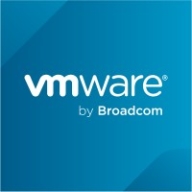

Informatica PowerCenter and Spring Cloud Data Flow are competitive solutions in the data integration market. While PowerCenter leads due to its robust data management capabilities, Spring Cloud Data Flow has an edge in flexibility and integration with modern cloud-native technologies.
Features: PowerCenter features comprehensive data transformation capabilities, strong governance infrastructure, and extensive data profiling tools. Spring Cloud Data Flow offers advanced stream processing, microservices architecture, and real-time analytics capabilities.
Room for Improvement: PowerCenter could improve in reducing setup complexity, minimizing maintenance requirements, and enhancing its cloud-native features. Spring Cloud Data Flow would benefit from stronger compliance tools, improved support for large-scale enterprise data environments, and enhanced data security features.
Ease of Deployment and Customer Service: PowerCenter requires extensive setup and maintenance, tailored for enterprises with IT resources, complemented by robust customer support. Spring Cloud Data Flow is swiftly deployable in DevOps environments, appealing with its open-source collaborative support model.
Pricing and ROI: PowerCenter involves higher upfront costs with promising ROI on comprehensive data solutions. Spring Cloud Data Flow offers a cost-effective entry, particularly for cloud-native deployments, with excellent ROI for microservices-based architectures.
| Product | Market Share (%) |
|---|---|
| Informatica PowerCenter | 6.0% |
| Spring Cloud Data Flow | 1.2% |
| Other | 92.8% |


| Company Size | Count |
|---|---|
| Small Business | 15 |
| Midsize Enterprise | 10 |
| Large Enterprise | 72 |
| Company Size | Count |
|---|---|
| Small Business | 3 |
| Midsize Enterprise | 1 |
| Large Enterprise | 5 |
Informatica PowerCenter is a data integration and data visualization tool. The solution works as an enterprise data integration platform that helps organizations access, transform, and integrate data from various systems. The product is designed to support companies in the full cycle of a project, from its initial rollout to critical deployments. Informatica PowerCenter allows developers and analysts to collaborate while accelerating the work process to deploy projects within days instead of months.
The Advanced edition of the product provides an additional real-time engine which allows companies to have always-on enterprise data integration. This ensures seamless collaboration and increment of data lineage visibility and impacts analysis.
The Premium edition of the solution offers an early warning system that detects unexpected behaviors or incorrect utilization of resources in the workflows and alerts companies in the case that these occur. This version of the product also offers automatic data validation, which ensures data accuracy and reduces testing time and expenditure of resources for by up to 90%.
Informatica PowerCenter Features
The product provides users with various features which allow them to execute data integration initiatives such as analytics, data warehousing, data governance, consolidation, and application migration. The features of the solution include:
Informatica PowerCenter Benefits
The benefits of using Informatica PowerCenter include:
Reviews from Real Users
Yahya T., a developer and architect at L'Oreal, says the product is stable, provides good support, and integrating it with other systems is very fast.
Mohamed E., a senior manager for Data management and data governance at a tech company, says PowerCenter is stable, mature, and offers flexibility in building the pipeline and has a drag-and-drop mode because it's GUI-based; technical support is brilliant.
Spring Cloud Data Flow is a toolkit for building data integration and real-time data processing pipelines.
Pipelines consist of Spring Boot apps, built using the Spring Cloud Stream or Spring Cloud Task microservice frameworks. This makes Spring Cloud Data Flow suitable for a range of data processing use cases, from import/export to event streaming and predictive analytics. Use Spring Cloud Data Flow to connect your Enterprise to the Internet of Anything—mobile devices, sensors, wearables, automobiles, and more.
We monitor all Data Integration reviews to prevent fraudulent reviews and keep review quality high. We do not post reviews by company employees or direct competitors. We validate each review for authenticity via cross-reference with LinkedIn, and personal follow-up with the reviewer when necessary.